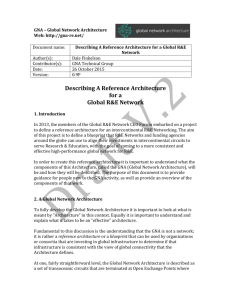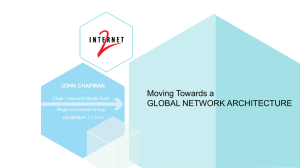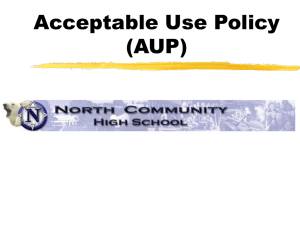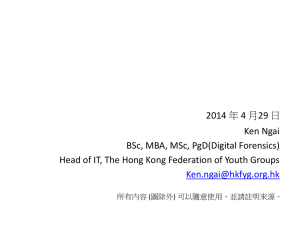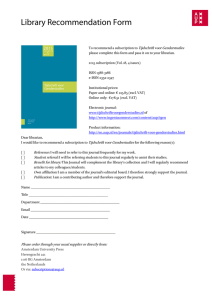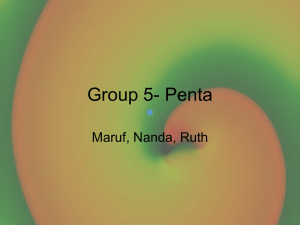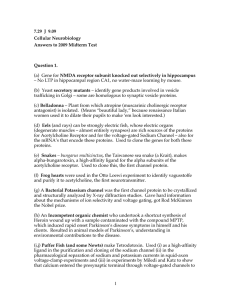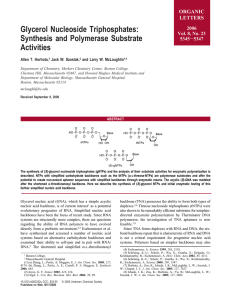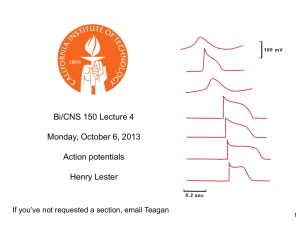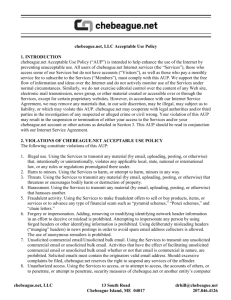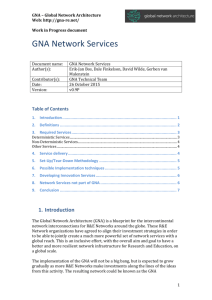docx - Global Network Architecture
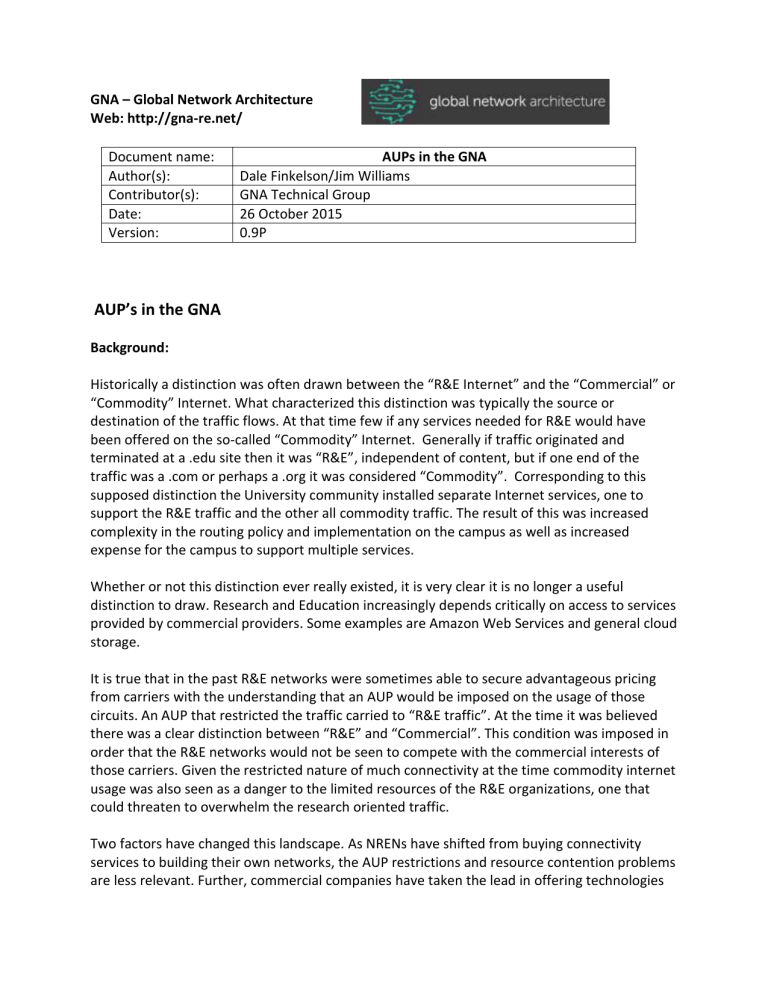
GNA – Global Network Architecture
Web: http://gna-re.net/
Document name:
Author(s):
Contributor(s):
Date:
Version:
AUPs in the GNA
Dale Finkelson/Jim Williams
GNA Technical Group
26 October 2015
0.9P
AUP’s in the GNA
Background:
Historically a distinction was often drawn between the “R&E Internet” and the “Commercial” or
“Commodity” Internet. What characterized this distinction was typically the source or destination of the traffic flows. At that time few if any services needed for R&E would have been offered on the so-called “Commodity” Internet. Generally if traffic originated and terminated at a .edu site then it was “R&E”, independent of content, but if one end of the traffic was a .com or perhaps a .org it was considered “Commodity”. Corresponding to this supposed distinction the University community installed separate Internet services, one to support the R&E traffic and the other all commodity traffic. The result of this was increased complexity in the routing policy and implementation on the campus as well as increased expense for the campus to support multiple services.
Whether or not this distinction ever really existed, it is very clear it is no longer a useful distinction to draw. Research and Education increasingly depends critically on access to services provided by commercial providers. Some examples are Amazon Web Services and general cloud storage.
It is true that in the past R&E networks were sometimes able to secure advantageous pricing from carriers with the understanding that an AUP would be imposed on the usage of those circuits. An AUP that restricted the traffic carried to “R&E traffic”. At the time it was believed there was a clear distinction between “R&E” and “Commercial”. This condition was imposed in order that the R&E networks would not be seen to compete with the commercial interests of those carriers. Given the restricted nature of much connectivity at the time commodity internet usage was also seen as a danger to the limited resources of the R&E organizations, one that could threaten to overwhelm the research oriented traffic.
Two factors have changed this landscape. As NRENs have shifted from buying connectivity services to building their own networks, the AUP restrictions and resource contention problems are less relevant. Further, commercial companies have taken the lead in offering technologies
like Content Data Networks (CDN) and cloud services that have become critical to the activities of the R&E institutions. The value of these services is directly tied to the quality of the connectivity to those services.
These services could be compute or storage resources. They could be caching of information for perspective students who use home broadband to get at those resources. The sources of data that faculty require has also expanded greatly. Some will still be from large scale instruments but equally much data, or perhaps meta-data, is found at any number of sources.
Some of these resources will be located at Data Centers operated by for profit organizations, but that does not minimize their critical role in serving the mission of the institutions.
It is unrealistic expect that the institutions will put in place large duplicative and expensive infrastructure to access these two “kinds” of information and services. All of these services should be available to them on any of the connections that they put in place. They may choose to install multiple links for redundancy or efficiency but it should not be a forced policy.
Recommendation
:
It is important that each component of the GNA (link and Exchange Point) have an Open
(completely non-restrictive, exclusive of legal requirements) AUP.
It should be understood that the goal here is certainly not to provide a means for corporations to provision their internal infrastructures. The goal of this is to provide high quality, consistent access to cloud services, CDNs and other services to the R&E community. The recommendation at this point is to enable the link owners to have consistent information about the traffic on a link. Use of the link by a non-R&E organization for backbone purposes will not be considered an acceptable use.
This does not imply that individual organizations cannot have or impose AUP restrictions within their networks. Organizations are free to restrict internal connections and traffic as they need, understanding that his may have performance implications. However these policies should only impose those restrictions on internal institutions and groups. Those policies should not be applied to the Exchange point and wide area connections that are part of an instantiation of the
GNA.
The network components that are defined by the GNA are links and exchange points (landing points of those circuits). In order to be considered as a part of a network instance of the GNA these resources cannot impose restrictions (excluding legal considerations of course) on what traffic may transit this infrastructure. Within this model, traffic is just traffic, there are not different classes or types.
